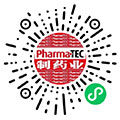FDA所说的CGMP到底是什么意思?
Pharmaceutical Quality affects every American. The Food and Drug Administration (FDA) regulates the quality of pharmaceuticals very carefully. The main regulatory standard for ensuring pharmaceutical quality is the Current Good Manufacturing Practice (CGMPs) regulation for human pharmaceuticals. Consumers expect that each batch of medicines they take will meet quality standards so that they will be safe and effective. Most people, however, are not aware of CGMPs, or how FDA assures that drug manufacturing processes meet these basic objectives. Recently, FDA has announced a number of regulatory actions taken against drug manufacturers based on the lack of CGMPs. This paper discusses some facts that may be helpful in understanding how CGMPs establish the foundation for drug product quality.
What are CGMPs? 什么是cGMP?
CGMP refers to the Current Good Manufacturing Practice regulations enforced by theFDA. CGMPs provide for systems that assure proper design, monitoring, and control of manufacturing processes and facilities. Adherence to the CGMP regulations assures the identity, strength, quality, and purity of drug products by requiring that manufacturers of medications adequately control manufacturing operations. This includes establishing strong quality management systems, obtaining appropriate quality raw materials, establishing robust operating procedures, detecting and investigating product quality deviations, and maintaining reliable testing laboratories. This formal system of controls at a pharmaceutical company, if adequately put into practice, helps to prevent instances of contamination, mix-ups, deviations, failures, and errors. This assures that drug products meet their quality standards.
The CGMP requirements were established to be flexible in order to allow each manufacturer to decide individually how to best implement the necessary controls by using scientifically sound design, processing methods, and testing procedures. The flexibility in these regulations allows companies to use modern technologies and innovative approaches to achieve higher quality through continual improvement. Accordingly, the "C" in CGMP stands for "current," requiring companies to use technologies and systems that are up-to-date in order to comply with the regulations. Systems and equipment that may have been "top-of-the-line" to prevent contamination, mix-ups, and errors 10 or 20 years ago may be less than adequate by today's standards.
It is important to note that CGMPs are minimum requirements. Many pharmaceutical manufacturers are already implementing comprehensive, modern quality systems and risk management approaches that exceed these minimum standards.
Why are CGMPs so important? 为什么CGMP如此重要?
A consumer usually cannot detect (through smell, touch, or sight) that a drug product is safe or if it will work. While CGMPs require testing, testing alone is not adequate to ensure quality. In most instances testing is done on a small sample of a batch (for example, a drug manufacturer may test 100 tablets from a batch that contains 2 million tablets), so that most of the batch can be used for patients rather than destroyed by testing. Therefore, it is important that drugs are manufactured under conditions and practices required by the CGMP regulations to assure that quality is built into the design and manufacturing process at every step. Facilities that are in good condition, equipment that is properly maintained and calibrated, employees who are qualified and fully trained, and processes that are reliable and reproducible, are a few examples of how CGMP requirements help to assure the safety and efficacy of drug products.
How does FDA determine if a company is complying with CGMP regulations? FDA如何确定一家公司是否符合CGMP法规?
FDA inspects pharmaceutical manufacturing facilities worldwide, including facilities that manufacture active ingredients and the finished product.Inspections follow a standard approach and are conducted by highly trained FDA staff. FDA also relies upon reports of potentially defective drug products from the public and the industry. FDA will often use these reports to identify sites for which an inspection or investigation is needed. Most companies that are inspected are found to be fully compliant with the CGMP regulations.
If a manufacturer is not following CGMPs, are drug products safe for use? 如果生产商没有遵循CGMP,药品是否可以安全使用?
If a company is not complying with CGMP regulations, any drug it makes is considered “adulterated” under the law. This kind of adulteration means that the drug was not manufactured under conditions that comply with CGMP. It does not mean that there is necessarily something wrong with the drug.
For consumers currently taking medicines from a company that was not following CGMPs, FDA usually advises these consumers not to interrupt their drug therapy, which could have serious implications for their health. Consumers should seek advice from their health care professionals before stopping or changing medications. Regulatory actions against companies with poor CGMPs are often intended to prevent the possibility of unsafe and/or ineffective drugs. In rare cases, FDA regulatory action is intended to stop the distribution or manufacturing of violative product. The impact of CGMP violations depends on the nature of those violations and on the specific drugs involved. A drug manufactured in violation of CGMP may still meet its labeled specifications, and the risk that the drug is unsafe or ineffective could be minimal. Thus, FDA’s advice will be specific to the circumstances, and health care professionals are best able to balance risks and benefits and make the right decision for their patients.
What can FDA do to protect the public when there are CGMP violations? 当存在CGMP违规时,FDA可以做些什么来保护公众?
If the failure to meet CGMPs results in the distribution of a drug that does not offer the benefit as labeled because, for example, it has too little active ingredient, the company may subsequently recall that product. This protects the public from further harm by removing these drugs from the market. While FDA cannot force a company to recall a drug, companies usually will recall voluntarily or at FDA’s request. If a company refuses to recall a drug, FDA can warn the public and can seize the drug.
FDA can also bring a seizure or injunction case in court to address CGMP violations even where there is no direct evidence of a defect affecting the drug’s performance. When FDA brings a seizure case, the agency asks the court for an order that allows federal officials to take possession of “adulterated” drugs. When FDA brings an injunction case, FDA asks the court to order a company to stop violating CGMPs. Both seizure and injunction cases often lead to court orders that require companies to take many steps to correct CGMP violations, which may include repairing facilities and equipment, improving sanitation and cleanliness, performing additional testing to verify quality, and improving employee training. FDA can also bring criminal cases because of CGMP violations, seeking fines and jail time.
How would a new drug company learn about CGMPs and about FDA’s expectations on complying with them? 一家新的制药公司如何了解CGMP以及FDA对遵守CGMP的期望?
FDA publishes regulations and guidance documents for industry in theFederal Register. This is how the federal government notifies the public of what we are doing and why. FDA’s website, www.fda.gov also contains links to the CGMP regulations, guidance documents, and various resources to help drug companies comply with the law. FDA also conducts extensive public outreach through presentations at national and international meetings and conferences, to discuss and explain the CGMP requirements and the latest policy documents.
内容来源:GMP干货
责任编辑:胡静 审核人:何发
邵丽竹
何发
热点文章
-
几种典型制药工艺流程图分析
2025-10-11
-
阿司匹林合成工艺及装置改进
2025-10-21
-
《药包材GMP(2025)》与药品GMP深度对比:核心差异、新增要点与实施指引
2025-11-25
-
一文看懂新药研发到上市的全流程
2025-11-25
-
中药颗粒剂生产中的现代化工艺改造
2025-11-04
-
辐照辐照灭菌技术在制药行业中的应用灭菌技术在制药行业中的应用
2025-10-11
-
2025年50家头部药企的竞争格局与核心趋势分析
2025-10-21
-
基于CFD仿真技术的灌装机充氮装置设计优化
本文以某制药产线的灌装机设备为研究对象,采用计算流体动力学(CFD)仿真技术对充氮装置的充氮性能进行分析,并结合分析结果对氮幕结构进行了优化设计。随后,针对优化方案进行性能仿真验证,结果显示优化后的顶空残氧量降低至0.252%。为了进一步验证优化方案的实际效果,将优化方案应用于实际产线进行性能测试,测得的顶空残氧量为0.68%,这一结果满足了小于1%的要求,表明其充氮保护性能已达到国际先进水平。
作者:王志刚、刘依宽、刘佳鑫
-
药品密封性检测 :用户需求与优化
-
可控冻融系统在生物原液上的应用
-
人用疫苗生产数字化转型
-
药包材生产质量管理的进阶策略
-
药厂洁净区域风量和压差的控制策略













评论
加载更多